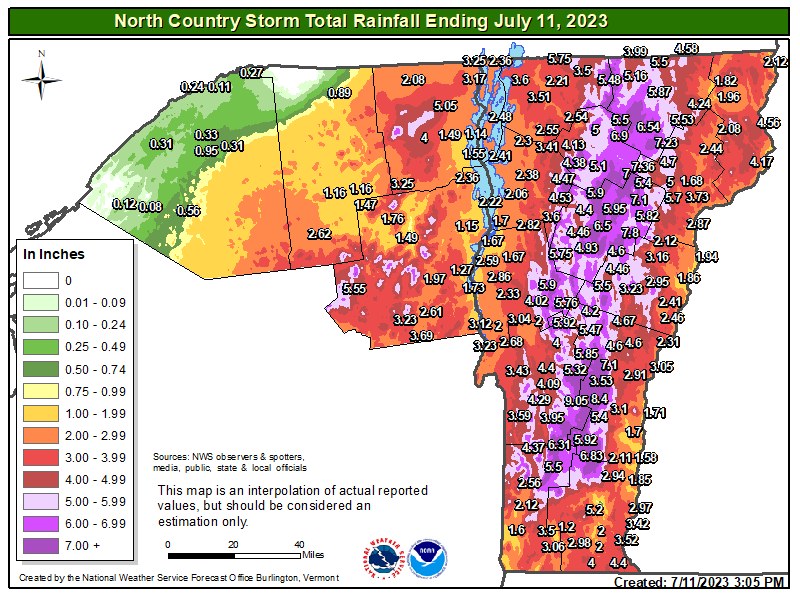A State of Disaster has been declared for all 14 counties of the state of Vermont in the USA after two months of rain in two days triggered the worst flooding since Tropical Storm Irene in 2011.
“Make no mistake, the devastation and flooding we’re experiencing across Vermont is historic and catastrophic,” Vermont Governor Phil Scott said.

In a statement of 11 July 2023, Governor Scott, said, “Earlier today, while overseas, President Biden approved my request for a disaster declaration for all 14 Counties. This will help mobilize federal resources to support our response and recovery efforts for this unfolding and ongoing disaster.”
“Flood waters continue to rise in some places like our capital city and have surpassed levels seen during Tropical Storm Irene.”
Public Safety Commissioner Jennifer Morrison said areas of Montpelier, Barre, Ludlow, Londonderry, Andover and surrounding towns have been the hardest hit. Many other towns are experiencing significant flooding, the Commissioner said.
Vermont’s 13 swift water rescue teams performed more than 100 rescues throughout the state. Rescue teams were assisted by crews from other states, including Connecticut, Massachusetts and North Carolina. Five helicopters from the Vermont and New Hampshire National Guards were deployed to conduct evacuations in the hardest hit and most remote areas not accessible by swiftwater teams.
The National Weather Service (NWS) at Burlington VT reported unofficial rainfall observations for a 38-hour period to 11 July 2023. These data show Plymouth in Windsor County recorded 9.05 inches of rain, Ludlow 6.23 inches, Montpelier Airport 6.82 inches, Barre 7.80 inches and Andover 8.65 inches, among others.

NWS Burlington has forecast further rain in the coming days.
“Floodwaters continue to recede today under generally dry conditions. Unfortunately, several rounds of showers and thunderstorms are expected Thursday through Friday with additional rainfall in excess of 1″ possible. This will renew the threat for additional flooding, especially where major flooding has occurred over the past 2 days,” the Service said on 12 July.
River levels increased, most dramatically the Winooski River at Montpelier, capital city of Vermont. The river jumped by over 14 feet in the space of 20 hours on 10 July. The Winooski finally crested at 21.25 feet, well above Major Flood Stage of 17.5 feet, early on 11 July. Levels have since fall to below Minor Flood Stage. As of 12 July the Winooski River at Essex Junction remained above Major Flood Stage.
Elsewhere, the Lamoille River at Jeffersonville reached record highs, while the Otter Creek at Center Rutland came very close.
As of early 11 July 2023, Commissioner Morrison said “Rivers are creating severe flooding issues this morning, even along those that have not yet crested – it will take some time for rivers to recede.”




Heavy rain and some flooding also affected areas of New Hampshire and Massachusetts states during this period. In New Hampshire, roads were flooded in Nelson, Richmond, Stoddard, Swanzey and Winchester municipalities. 150 people people were evacuated from a campsite in Swanzey.
In Massachusetts, Governor Maura Healey said there were reports of flooding in central and western Massachusetts and that state emergency management officials were in touch with local authorities. Rescue crews evacuated a number of people from their flooded homes along the Mill River in Williamsburg.
Previously the slow-moving storm had dumped heavy rainfall in areas of New York, in particular in Orange and Ontario Counties. One person died after being swept away by flood waters in Highland Falls.
Below are a selection of photos provided by Vermont National Guard helicopter crews on 11 July 2023.



